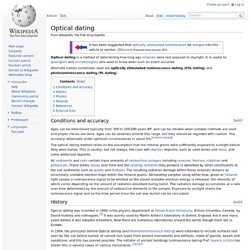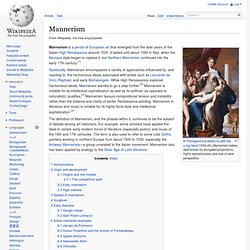

The Curious Case of the Immortal Jellyfish. Monteverde. Monteverde, Costa Rica is a small town in Puntarenas, Costa Rica, located in the Cordillera de Tilarán. Roughly a four hour drive from the Central Valley, Monteverde is considered a major ecotourism destination in Costa Rica.
The area is host to the Monteverde Cloud Forest Reserve and numerous other reserves, which draw considerable numbers of tourists and naturalists. National Geographic has called the Monteverde Cloud Forest Reserve "the jewel in the crown of cloud forest reserves".[1] Newsweek has declared Monteverde the world's #14 Place to Remember Before it Disappears. " Eastern Grey Kangaroo. Description[edit] Female grazing Ecology[edit] Eastern greys in native habitat. Macropodidae. Giant kangaroo likely killed off by humans - Technology & science - Science. CANBERRA, Australia — Australia's giant prehistoric animals, including three-meter (10-foot) -tall kangaroos, were likely wiped out by aboriginal settlers, not climate change, a researcher said Tuesday.

The question of what killed Australia's so-called megafauna — including giant kangaroos and wombat-like creatures as big as a rhinoceros — during the last Ice Age divides paleontologists. The most popular theories are that climate change drove the giants to extinction more than 40,000 years ago or that Aborigines, who arrived in Australia as far back as 60,000 years ago, were responsible because of over hunting or burning the vegetation upon which the creatures fed.
But new fossil evidence from the Naracoorte Caves region of South Australia state ruled out climate change as the cause, according an article published in the latest edition of the Geological Society of America's monthly journal, "Geology. " "If it wasn't climate, then it had to be humans," Prideaux told The Associated Press. Giant Kangaroos Killed 40,000 Years Ago by a Severe Drought, Not by Ancient Aborigines. During the Pleistocene period (2 million to 10,000 years ago), Australian fauna was as diverse and impressive as the fauna of the African savanna today. On the Australian grassland were roaming large herds of giant kangaroos (image), 3 m (10 feet tall) and weighing 200 kg, two tonnes giant wombats and other large herbivorous species. The abundant fauna of wild beasts sustained large carnivorous species like giant goannas (7 m long, 600 kg weight), 5 m long land crocodiles, leopard sized marsupial lions (related to wombats) or 500 kg flightless birds.
But this entire fauna of giants vanished 40,000 years ago. People, thought to have entered Australia 50-40,000 years ago, were blamed for the extinction of the megafauna. Now, researchers from the Queensland University of Technology have gathered proof that the great extinction might have been produced by a large drought. Investigating the fossil-rich Darling. Kangaroo. Giant Prehistoric "Kangaroos" Killed Off by Humans. August 13, 2008 Humans, not climate change, were responsible for the extinction of giant "kangaroos" and other massive marsupials in Tasmania more than 40,000 years ago, according to new research. Hunting on the Australian island exterminated several prehistoric animals, including the kangaroo-like beasts, marsupial "hippopotamuses," and leopard-like cats, a team of scientists announced. (Learn more about the red kangaroos and hippos of today.) Giant Kangaroo Rat. Australian megafauna. Are a number of large animal species in Australia , often defined as species with body mass estimates of greater than 30 kilograms, or equal to or greater than 30% greater body mass than their closest living relatives.
Many of these species became extinct during the Pleistocene (16,100±100 - 50,000 years before present). [ 1 ] The cause of the extinction is an active, contentious and factionalised field of research where politics and ideology often takes precedence over scientific evidence. [ 2 ] It is hypothesised that with the arrival of humans (around 48,000-60,000 years ago), hunting and the use of fire to manage their environment may have contributed to the extinction of the megafauna . [ 3 ] Increased aridity during peak glaciation (about 18,000 years ago) may have also contributed to the extinction of the megafauna. There are similarities between prehistoric Australian megafauna and some mythical creatures from the aboriginal dreamtime (Mackness 2009). [ edit ] Mammals and. Optical dating.
Is a method of determining how long ago minerals were last exposed to daylight.

It is useful to geologists and archaeologists who want to know when such an event occurred. Alternate names sometimes used are ( ) and ( ). [ edit ] Conditions and accuracy Ages can be determined typically from 300 to 100,000 years BP, and can be reliable when suitable methods are used and proper checks are done. Ages can be obtained outside this range, but they should be regarded with caution. The optical dating method relies on the assumption that the mineral grains were sufficiently exposed to sunlight before they were buried. Golden toad. The golden toad (Bufo periglenes, also known as Cranopsis periglenes or Incilius periglenes), was a small true toad that was once abundant in a small region of high-altitude, cloud-covered tropical forests, about 4 square kilometres (1.5 sq mi) in area, north of the city of Monteverde, Costa Rica.[2] For this reason, it is sometimes also called the golden toad of Monteverde or the Monte Verde toad and is commonly considered to be the "poster child" for the amphibian decline crisis.[3] Other common English names include Alajuela toad and orange toad.
This toad was first described in 1966 by the herpetologist Jay Savage.[2] On 15 May 1989, a single male golden toad was found, but no sightings of B. periglenes have been reported since that time, so it is classified by the International Union for Conservation of Nature (IUCN) as an extinct species.[1] Its sudden extinction may have been caused by chytrid fungus and extensive habitat loss. Kangaroo emblems and popular culture. Kangaroo emblems and popular culture deals with how the kangaroo has become a recognisable symbol of Australia, both within Australia itself, and internationally.

It also deals with the various uses which have been made of the image and name of the kangaroo. European first encounters[edit] The kangaroo was considered a unique oddity when Captain Cook's HMB Endeavour arrived back in England in 1771 with a specimen on board. Over time it has come to symbolise Australia and Australian values.[1] Scientist Smackdown: Were Giant Kangaroos Hunted Into Extinction? Uranium-thorium dating. Uranium-thorium dating, also called thorium-230 dating, uranium-series disequilibrium dating or uranium-series dating, is a radiometric dating technique commonly used to determine the age of calcium carbonate materials such as speleothem or coral.[1] Unlike other commonly used radiometric dating techniques such as rubidium-strontium or uranium-lead dating, the uranium-thorium technique does not measure accumulation of a stable end-member decay product.
Instead, the uranium-thorium technique calculates an age from the degree to which secular equilibrium has been restored between the radioactive isotope thorium-230 and its radioactive parent uranium-234 within a sample. Thorium is not soluble in natural waters under conditions found at or near the surface of the earth, so materials grown in or from these waters do not usually contain thorium. Cloud forest. A cloud forest, also called a fog forest, is a generally tropical or subtropical, evergreen, montane, moist forest characterized by a persistent, frequent or seasonal low-level cloud cover, usually at the canopy level.

Cloud forests often exhibit an abundance of mosses covering the ground and vegetation, in which case they are also referred to as mossy forests. Mossy forests usually develop on the saddles of mountains, where moisture introduced by settling clouds is more effectively retained.[1] Distribution and climate[edit] Annual rainfall can range from 500 to 10,000 mm/year and mean temperature between 8 to 20°C.[3] Mannerism. Mannerism is a period of European art that emerged from the later years of the Italian High Renaissance around 1520.

It lasted until about 1580 in Italy, when the Baroque style began to replace it, but Northern Mannerism continued into the early 17th century.[1] Stylistically, Mannerism encompasses a variety of approaches influenced by, and reacting to, the harmonious ideals associated with artists such as Leonardo da Vinci, Raphael, and early Michelangelo. While High Renaissance explored harmonious ideals, Mannerism wanted to go a step further.[2] Mannerism is notable for its intellectual sophistication as well as its artificial (as opposed to naturalistic) qualities.[3] Mannerism favours compositional tension and instability rather than the balance and clarity of earlier Renaissance painting. Mannerism in literature and music is notable for its highly florid style and intellectual sophistication.[4] Nomenclature[edit] As a stylistic label, "Mannerism" is not easily defined.